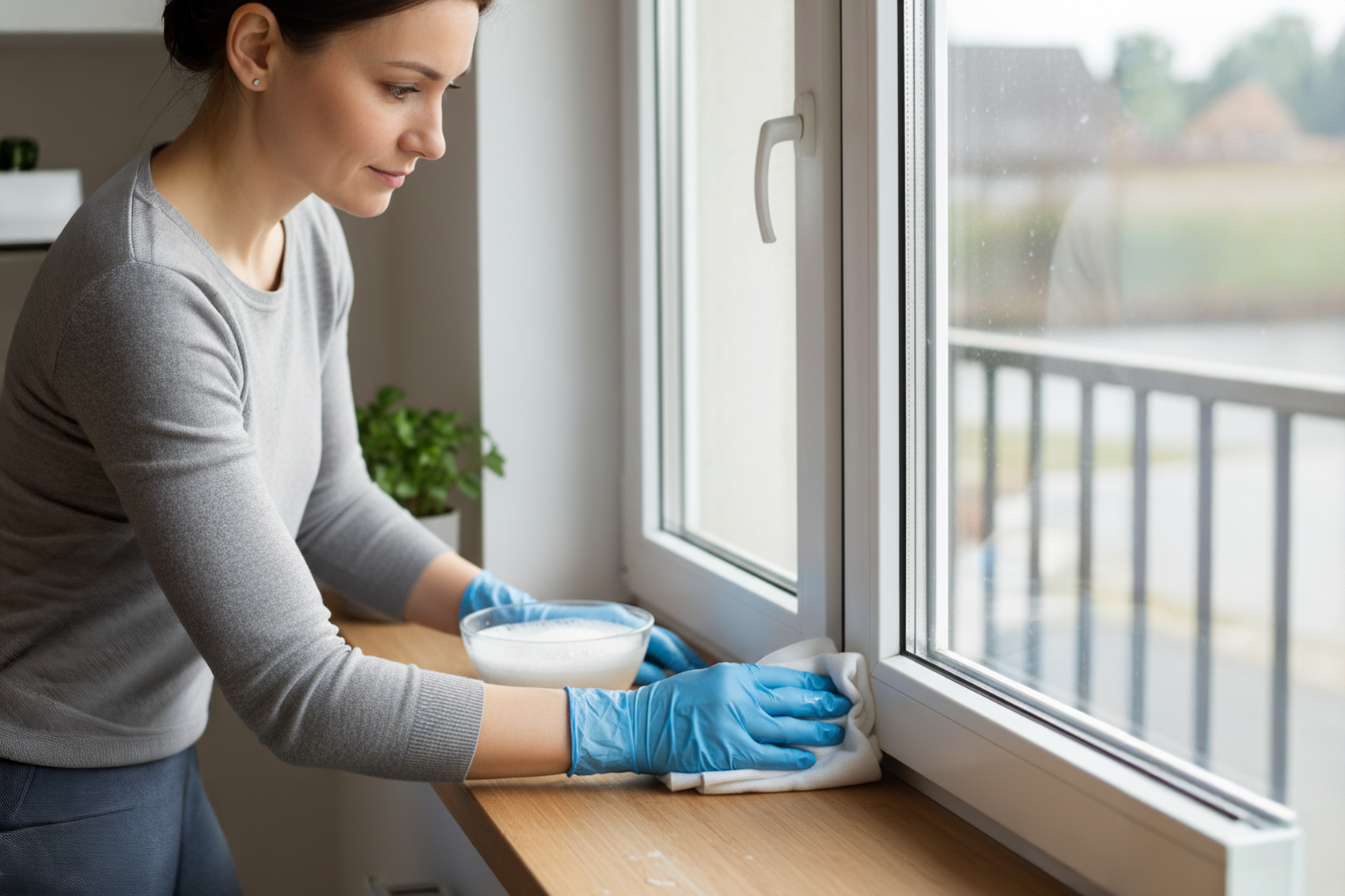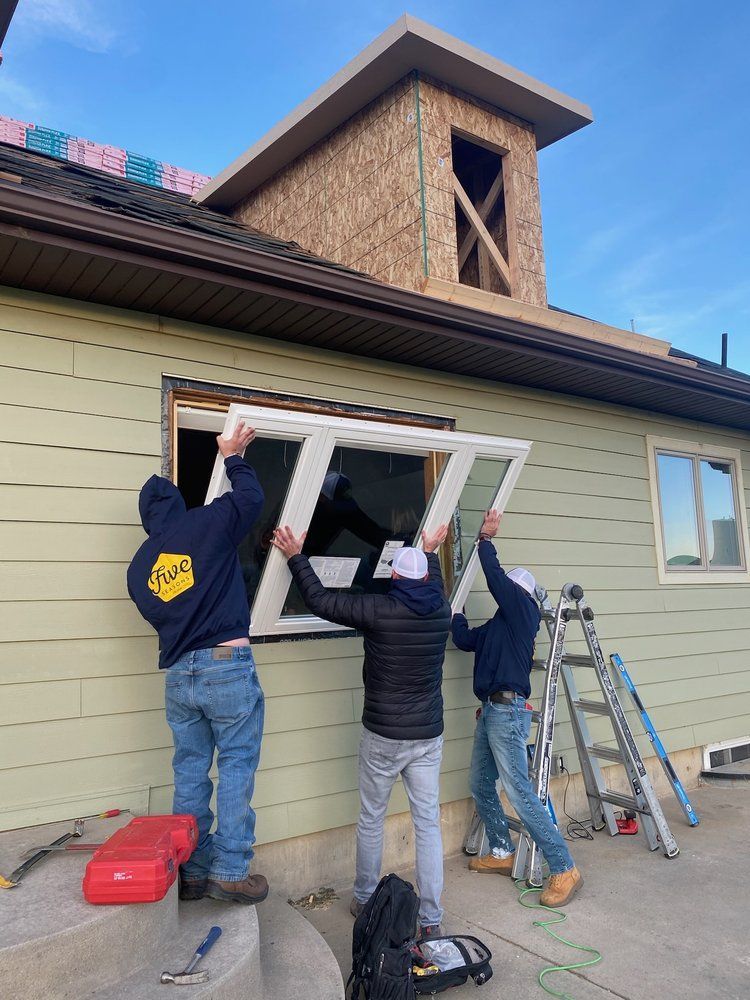Vinyl window care and maintenance tips extending 30-year lifespan focus on regular cleaning with mild soap and water, lubricating moving parts annually, inspecting weatherstripping for damage, cleaning weep holes to prevent water accumulation, and avoiding abrasive cleaners or harsh chemicals that degrade vinyl surfaces. These simple maintenance practices require only 30-60 minutes per window annually while preventing common problems including seal failures, operation difficulties, and premature deterioration that reduce expected service life.
According to vinyl window manufacturer data, homes following recommended maintenance schedules achieve 25-35 year service lives compared to 15-20 years for neglected installations, with proper care preventing 70-80% of common failure modes including weatherstripping deterioration, hardware malfunction, and drainage system blockages. This maintenance investment of 2-4 hours annually for typical home window counts creates substantial value protection through extended performance and avoided replacement costs.
Understanding specific maintenance requirements, appropriate cleaning methods, and preventive inspection practices helps homeowners maximize vinyl window lifespan while maintaining optimal energy efficiency and operational quality throughout decades of service.
Regular Cleaning and Surface Care
Proper Cleaning Techniques
Clean vinyl window frames and sashes every 3-6 months using mild dish soap diluted in warm water applied with soft cloths or non-abrasive sponges. This gentle cleaning removes dirt, pollen, and environmental deposits without damaging vinyl surfaces or protective coatings that maintain appearance and weather resistance.
Rinse thoroughly with clean water after washing ensuring complete soap removal that could leave residue attracting dirt or creating hazy appearance. The rinsing step proves especially important in dusty environments where soap residue combines with airborne particles creating visible buildup requiring more aggressive cleaning.
Avoiding Damaging Cleaning Products
Never use abrasive cleaners, scouring pads, acetone, paint thinner, or harsh chemicals on vinyl windows as these products can damage surface finish, cause discoloration, or weaken vinyl material structure. These aggressive cleaners create permanent damage requiring professional refinishing or complete window replacement rather than simple correction.
Similarly avoid petroleum-based products, nail polish remover, or strong solvents that chemically react with vinyl causing brittleness, cracking, or surface degradation. When encountering stubborn stains, use vinyl-specific cleaners or consult manufacturer recommendations rather than experimenting with household chemicals risking permanent damage.

Hardware Maintenance and Lubrication
Annual Lubrication Requirements
Lubricate all moving parts including locks, hinges, rollers, and operating mechanisms annually using silicone-based lubricants avoiding petroleum products that attract dust and degrade components. This lubrication prevents excessive wear, ensures smooth operation, and protects against corrosion particularly in coastal or high-humidity environments.
Apply lubricant sparingly to avoid excessive buildup attracting dirt while ensuring adequate protection for metal components. Focus on pivot points, roller tracks, and locking mechanisms where friction causes most wear while avoiding glass surfaces or weatherstripping where lubricants create problems rather than benefits.
Hardware Inspection and Adjustment
Inspect hardware components during lubrication checking for loose screws, damaged parts, or misalignment affecting operation. Tighten loose fasteners, adjust strike plates ensuring proper engagement, and identify worn components requiring replacement before complete failure occurs.
Address minor hardware issues promptly preventing progressive damage affecting surrounding components. A loose hinge causing binding can damage surrounding frame or sash if ignored while simple tightening prevents escalation into more expensive repairs requiring professional intervention.
Weatherstripping and Seal Maintenance
Inspection and Damage Assessment
Inspect weatherstripping annually checking for compression damage, tears, hardening, or gaps allowing air infiltration. Run hands around closed window perimeters feeling for air movement indicating compromised seals requiring attention before energy efficiency degradation becomes significant.
Visual inspection identifies obvious damage including separated weatherstripping, visible gaps, or deteriorated material requiring replacement. However, tactile inspection and simple smoke pencil tests detect less obvious seal failures affecting performance without visible symptoms requiring close examination.
Weatherstripping Replacement
Replace damaged weatherstripping promptly using manufacturer-specified replacement materials ensuring proper fit and compression. Quality weatherstripping maintains energy efficiency, prevents water infiltration, and reduces noise transmission justifying modest investment preventing larger problems.
DIY weatherstripping replacement proves practical for homeowners comfortable with basic maintenance while complex installations or hard-to-source materials may require professional assistance. The key involves addressing seal failures promptly rather than allowing continued air infiltration wasting energy and reducing comfort.
Drainage System Maintenance
Weep Hole Cleaning
Clean weep holes every 6-12 months removing debris, insect nests, or mineral deposits blocking drainage preventing water accumulation in window tracks. These small drainage openings prove critical for moisture management preventing standing water that causes mold growth, frame damage, or seal deterioration.
Use small brush, pipe cleaner, or compressed air clearing weep hole obstructions ensuring free drainage during rain events. Test drainage by pouring small amounts of water into window tracks verifying proper flow through weep holes rather than accumulating in sill areas.
Track and Sill Maintenance
Vacuum or wipe window tracks and sills regularly removing dirt, leaves, and debris that obstruct drainage or interfere with window operation. Clean tracks ensure smooth sliding operation while preventing buildup that retains moisture accelerating deterioration or creating operation problems.
Pay particular attention to corners and drainage channels where debris accumulates most readily. Regular cleaning prevents compacted buildup requiring aggressive intervention while maintaining optimal drainage function protecting window longevity.
Glass Care and Inspection
Appropriate Glass Cleaning Methods
Clean glass surfaces using standard glass cleaners or vinegar-water solutions avoiding products containing ammonia near weatherstripping or vinyl frames where chemical interaction can cause damage. Use lint-free cloths or squeegees achieving streak-free results without scratching glass surfaces.
For Low-E coated glass, verify cleaning product compatibility as some formulations can damage specialized coatings affecting energy performance. When uncertain about appropriate products, use plain water and microfiber cloths providing safe cleaning without risking coating damage.
Seal Integrity Monitoring
Inspect insulated glass units for condensation between panes indicating seal failure requiring glass replacement. This moisture infiltration destroys insulating properties making prompt replacement essential for maintaining energy efficiency and preventing permanent glass staining.
Early detection of seal failures allows addressing problems before complete performance loss occurs. Monitor windows seasonally noting any condensation development, particularly during temperature extremes when seal stress peaks and failures become most apparent.
Seasonal Maintenance Tasks
Spring and Fall Inspections
Conduct comprehensive window inspections twice annually checking operation, weatherstripping condition, hardware function, and overall condition identifying issues before they escalate. These seasonal checkups coincide with climate transitions when window performance matters most for heating and cooling efficiency.
Spring inspections prepare windows for cooling season verifying weatherstripping, screens, and operation while fall maintenance ensures heating season readiness addressing any summer damage or deterioration. This proactive approach prevents discovering problems during extreme weather when repair delays create comfort issues and energy waste.
Winter Weather Preparation
Before winter, ensure proper weatherstripping, verify drainage function preventing ice dams, and check operation ensuring windows close tightly against cold weather. Address any maintenance issues identified during fall inspection preventing winter performance problems.
Consider temporary weatherization measures for older windows including plastic film insulation or draft stoppers supplementing marginal weatherstripping until permanent repairs become practical. These interim solutions maintain comfort and efficiency through winter months protecting against excessive energy costs while planning permanent upgrades.
For homeowners with vinyl windows featuring woodgrain finishes, understanding proper care techniques that preserve realistic wood appearance while maintaining low-maintenance benefits ensures long-term aesthetic quality. For comprehensive information about woodgrain vinyl windows and their unique characteristics, explore our detailed guide: 🔗Vinyl Windows with Simulated Wood Grain Combining Beauty and Low Maintenance

People Also Ask About Vinyl Window Care and Maintenance
1. How often should you clean vinyl windows?
Clean vinyl window frames and tracks every 3-6 months maintaining appearance and preventing dirt buildup that can affect operation and drainage. High-traffic areas, dusty environments, or coastal locations may require more frequent cleaning every 2-3 months while protected installations in mild climates may extend to 6-12 month intervals.
Glass surfaces require cleaning as needed based on visibility and personal preferences, typically every 4-8 weeks for most homeowners. The cleaning frequency varies by environmental conditions including pollen, dust, rain patterns, and nearby construction or traffic creating window soiling.
Annual deep cleaning including hardware lubrication, weatherstripping inspection, and weep hole cleaning provides comprehensive maintenance addressing components beyond routine surface cleaning. This yearly service takes 30-60 minutes per window but significantly extends service life through preventive maintenance.
2. What should you never use to clean vinyl windows?
Never use abrasive cleaners, scouring pads, steel wool, acetone, paint thinner, nail polish remover, petroleum-based products, or cleaners containing harsh chemicals on vinyl windows. These products cause permanent surface damage, discoloration, brittleness, or chemical degradation requiring professional repair or complete window replacement.
Avoid high-pressure washing directly on vinyl frames as excessive pressure can damage weatherstripping, force water past seals, or physically deform vinyl material. Similarly avoid steam cleaners near weatherstripping or operating mechanisms where heat and moisture can cause seal damage or hardware corrosion.
Products containing bleach, ammonia (near vinyl frames), or strong solvents should be avoided or used cautiously with manufacturer approval. When encountering stubborn stains, research vinyl-safe cleaning alternatives or consult manufacturer guidance rather than risking permanent damage through aggressive chemical use.
3. Do vinyl windows need to be painted or sealed?
No, vinyl windows do not require painting, staining, or sealing throughout their service life as the color and weather protection are integral to the material rather than applied surface treatments. This maintenance-free characteristic represents primary advantage over wood windows requiring periodic refinishing protecting against moisture damage and maintaining appearance.
The vinyl material includes UV stabilizers and pigments throughout preventing fading while naturally resisting moisture, rot, and insect damage without protective coatings. This inherent durability means vinyl windows maintain original appearance and performance through 25-35 year service lives with only cleaning and basic maintenance.
Attempting to paint vinyl windows often voids warranties while creating maintenance burden similar to wood windows. The only recommended surface treatment involves occasional vinyl protectant application in harsh UV environments, though this remains optional rather than required maintenance.
4. How do you maintain the weatherstripping on vinyl windows?
Maintain weatherstripping through annual inspection checking for compression damage, tears, hardening, or separation from frames requiring replacement. Clean weatherstripping during regular window cleaning removing dirt and deposits that can prevent proper compression and sealing.
Apply silicone-based weatherstripping conditioner every 2-3 years keeping material pliable and preventing premature hardening or cracking. This treatment extends weatherstripping life while maintaining compression characteristics essential for energy efficiency and weather protection.
Replace damaged weatherstripping promptly using manufacturer-specified materials ensuring proper fit and compression. Quality weatherstripping costs $20-50 per window but prevents energy waste worth hundreds annually while protecting against water infiltration potentially causing thousands in damage.
5. What is the most important maintenance task for vinyl windows?
Regular cleaning and weep hole maintenance represent most critical tasks preventing 70-80% of common vinyl window problems including drainage failures, operation difficulties, and premature deterioration. Cleaning removes corrosive environmental deposits while weep hole maintenance prevents water accumulation causing frame damage, mold growth, and seal failures.
The combination of surface cleaning and drainage maintenance requires only 30-60 minutes per window annually but dramatically extends service life through preventive protection against most common failure modes. This modest time investment creates substantial value through avoided repairs and extended performance.
Annual hardware lubrication and weatherstripping inspection complement cleaning as secondary critical maintenance preventing operation problems and energy efficiency loss. Together, these basic maintenance tasks ensure vinyl windows deliver expected 25-35 year service lives while maintaining optimal performance throughout.
Our Take
At Five Seasons Windows & Doors, we emphasize proper maintenance education during every vinyl window installation throughout Colorado because we've seen how simple care dramatically extends window lifespan and performance. Our service experience shows that homes following basic maintenance schedules rarely experience premature failures while neglected windows develop problems requiring expensive repairs or early replacement.
Colorado's environmental challenges including intense UV exposure, dramatic temperature swings, and varied precipitation patterns make maintenance especially important for maximizing window longevity. The 30-60 minutes annually spent on proper care prevents problems that cost thousands to remedy while ensuring windows deliver expected performance throughout 25-35 year service lives.
We believe educating homeowners about simple maintenance requirements represents important responsibility ensuring they maximize their window investment. The minimal time commitment required for vinyl window care creates disproportionate value through extended lifespan, maintained efficiency, and avoided repair costs making basic maintenance one of the best returns on time investment for homeowners.
Final Takeaway
Vinyl window care and maintenance tips extending 30-year lifespan focus on simple practices including regular cleaning with mild soap, annual hardware lubrication, weatherstripping inspection, and weep hole cleaning requiring only 30-60 minutes per window annually. These basic maintenance tasks prevent 70-80% of common failure modes while protecting the window investment through extended service life and maintained performance.
Understanding appropriate cleaning products, lubrication requirements, and preventive inspection practices helps homeowners avoid damage while maximizing window longevity. The modest annual time investment creates substantial value through avoided repair costs, extended service life, and maintained energy efficiency throughout decades of window performance.
Professional guidance during installation and periodic professional inspections complement homeowner maintenance ensuring vinyl windows deliver expected 25-35 year service lives while maintaining optimal energy efficiency, operation quality, and appearance throughout extended service supporting long-term home value and comfort.
Get Started Today
Five Seasons Windows & Doors is Colorado’s top-rated local window company with 230+ 5-star reviews. We offer expert advice, no-pressure quotes, and flexible project options — including phased installs. Schedule your consult today.



